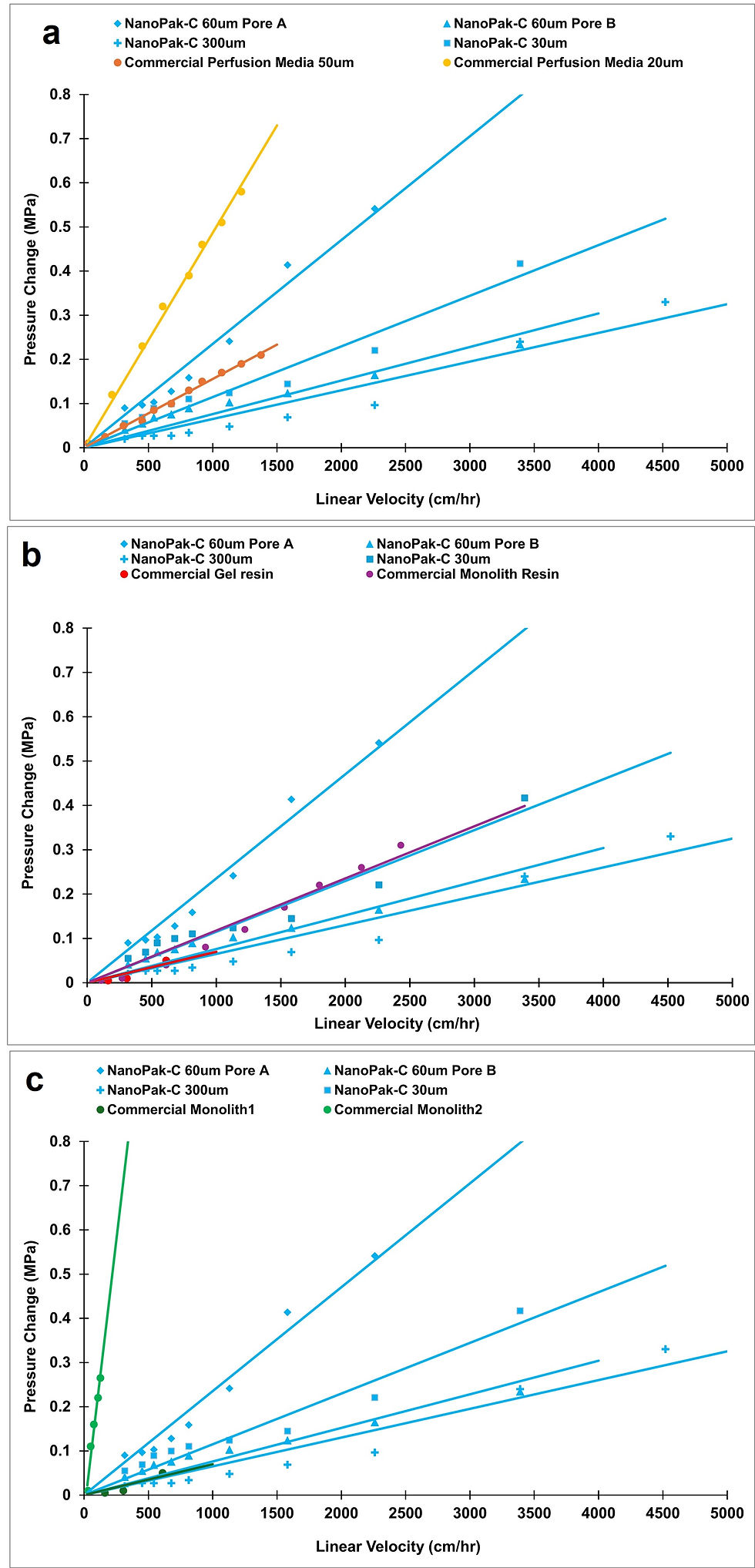Advancing Biologic Purification: Introducing NanoPak-C All Carbon Perfusion Microbeads
- MS
- Jul 17
- 4 min read
Millennial Scientific has developed a suite of novel NanoPak-C All Carbon perfusion microbeads, designed for the purification of large-sized biologics, including exosomes, virus particles, and mRNAs.

Conventional media typically feature a single set of pores with an average pore size of 30 nm (or 300 Å) or smaller. In contrast, perfusion particles possess two sets of pores. The first set consists of larger pores, known as perfusion pores, which are 500 nanometers (5,000 Å) or larger. The second set contains smaller pores that are similar to those found in conventional media. These smaller pore channels branch off the perfusion pores (see Figure 1) [1].
The term "perfusion" microbeads is derived from the resemblance of their pore structure to the body's network of arteries (large pores) and capillaries (small pores), which facilitate the perfusion of blood and fluids through tissues and organs [2]. This blog provides a detailed explanation of perfusion chromatography.
Conventional media are effective for separating individual peptides and proteins. However, peptide, protein aggregates, and large proteins, as well as other biologics such as mRNA or virus particles, often range from tens to hundreds of nanometers, making it difficult for them to enter the pores of conventional media. This issue affects the optimal purification of these large biologics.
Key advantages of NanoPak-C perfusion microbeads include:
1. Faster Separation: Separation times are 10 to 100 times faster than conventional chromatography while maintaining resolution and loading capacity, especially at high mobile-phase velocities (over 1000 cm/h) where convective transport outpaces diffusion.
2. Efficient Transport: Rapid biologic material movement within the perfusion pores and short diffusion paths keeps resolution and loading capacity independent of flow rates.
3. Shorter Residence Times: Reduced separation times decrease the residence time of biologics in the column, enhancing their recovery and minimizing risks of denaturation and damage.
4. Cost Savings: The combination of faster analysis and high loading capacity leads to lower costs in large-scale chromatographic processes.
The pore sizes of NanoPak-C microbeads can be tuned to suit a wide range of biologics, including:
Large proteins and extracellular vehicles (EVs/Exosomes).
Virus particles - Adeno-Associated Viruses (AAVs), lentivirus.
Nucleic acid, including plasmid DNA, mRNA.
How are NanoPak-C All Carbon perfusion microbeads different from other purely convective macroporous microbeads, monoliths, and other perfusion media?
The availability of NanoPak-C All Carbon perfusion microbeads expands options beyond traditional hard (e.g., styrene-divinylbenzene, acrylate) and soft (e.g., agarose gel) polymer-based media used for biological purification. Various terms, including perfusion chromatography media, monolithic microbead resin, and gel microbead resins, also refer to these media.
Macroporous microbeads and monoliths. Convective microbeads contain macro (very large) pores (see Figure 1). These microbeads are available under various names, such as monolith resins and gel resins, depending on the type of polymer used to manufacture them. Their diameters typically range from over 50 µm to 300 µm. Monoliths are a single, continuous, large piece of porous material, ranging from millimeters to centimeters in three dimensions, rather than microbeads. The pores of macroporous microbeads and monoliths are several units to tens of micrometers in size. However, simply increasing pore size does not necessarily improve binding capacity; it may even reduce volumetric capacity— the maximum volume of analyte a chromatography column can accommodate without compromising separation quality. Furthermore, larger particle sizes can compromise the mechanical strength of the microbeads, limiting their use to low-pressure liquid chromatography systems.

Our NanoPak-C microbeads feature large-sized perfusion pores extending throughout their entire structure, facilitating the convective transport of biological molecules. Their flow efficiency depends on the ratio of pore size to particle size (Figure 2). The smaller pores connect to the perfusion pores, enabling diffusive transport and increasing the surface area, which enhances the column's volumetric capacity. The shallow channels of these smaller pores help to minimize diffusion effects. Additionally, the microbeads are suitable for liquid chromatography setups operating at low, medium, and high pressures.
Perfusion media. Other perfusion media provide low backpressure and improved fluid movement through their interiors. However, given the extensive size range of various biologic materials, a common challenge with currently available perfusion media is the entrapment of biologic molecules within the pores, which can result in reduced elution concentrations. This problem of entrapment is frequently managed by employing extremely low flow rates.
NanoPak-C microbeads offer tunable microbead diameters and pore sizes, operating at high flow rates with linear pressure-flow curves and low pressure drops (Figure 2), allowing for customization to match specific biologic purification applications. Additionally, our media is 3D printable, enabling the assembly of custom monolith structures, a capability not previously possible with other media. This innovative capability offers multiple advantages. We will discuss these advantages in our next blog.
NanoPak-C All Carbon perfusion microbead options:
2, 10, 100, or 1000 gram bulk media. Microbead diameter options: 40-300 µm. Diffusive pore size options: 20-40 nm. Perfusion pore options: 0.5-3 µm.
For more information or to request samples, please email us at inquiry@millennialscientific.com, call us at 855 388 2800, or fill out our online form.
References
[1] N.B. Afeyan, S.P. Fulton, N.F. Gordon, I. Mazsaroff, L. Várady, F.E. Regnier, Perfusion Chromatography: An Approach to Purifying Biomolecules, Bio/Technology 8(3) (1990) 203-206.
[2] M.C. Garcı́a, M.L. Marina, M. Torre, Perfusion chromatography: an emergent technique for the analysis of food proteins, Journal of Chromatography A 880(1) (2000) 169-187.




Comentários